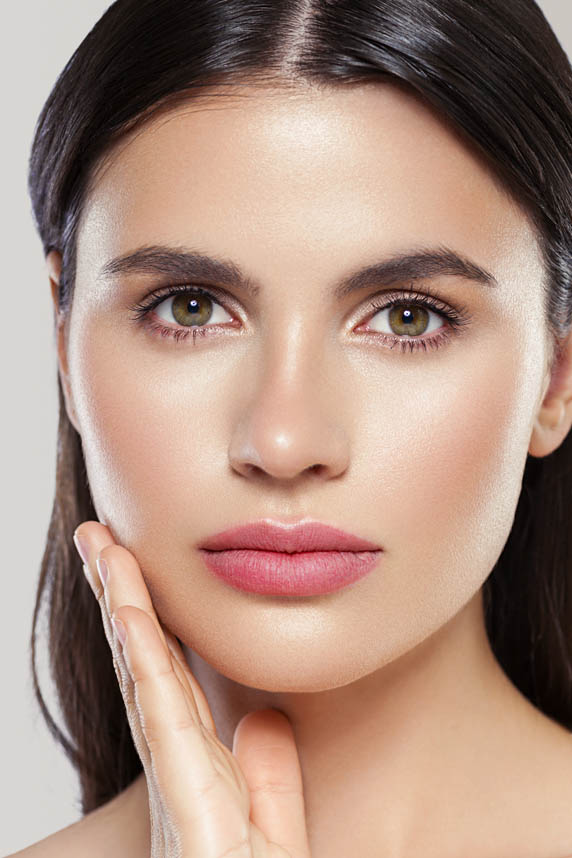 Botulinum A toxin (BOTOX Cosmetic®) injection is used in the cosmetic treatment of active facial wrinkles and creases between the eyebrows (glabellar frown lines), on the forehead, and around the eyes. It causes temporary but prolonged relaxation of the muscles into which it is injected. It can smooth the chin and lip lines and may help lift the corners of the mouth.
Botulinum A toxin (BOTOX Cosmetic®) injection is used in the cosmetic treatment of active facial wrinkles and creases between the eyebrows (glabellar frown lines), on the forehead, and around the eyes. It causes temporary but prolonged relaxation of the muscles into which it is injected. It can smooth the chin and lip lines and may help lift the corners of the mouth.
Botulinum A toxin (BOTOX Cosmetic®) is a natural protein derived from a specific strain of bacteria. The product is purified and standardized for safe medical use when injected by trained physicians. Botulinum A toxin has been approved by the Food and Drug Administration (FDA) for years for the treatment of eyelid spasm, muscle spasm causing crossed eyes, as well as for correcting one-sided facial muscle spasm. Botulinum A toxin has also been used cosmetically to soften expression lines and creases on the upper face since the 1990’s. BOTOX Cosmetic® was finally approved in 2002 by the FDA for use in the glabellar area (between the eyebrows) and more recently to relax crow’s feet near the eyes. Since then, physicians have expanded the use of BOTOX Cosmetic® to include relaxing forehead creases as well as other “off-label” areas like the chin and lip lines, with excellent results. Botox is also used therapeutically by dermatologists to treat severe sweating (hyperhidrosis) of the armpits and palms and by other specialists to improve some cases of migraines and muscle spasms.
Injections of BOTOX Cosmetic® into specific facial muscles cause those muscles to decrease the strength of their contraction, thereby improving the appearance of overlying wrinkles during motion and ultimately at rest. This softening is temporary, lasting from 3-9 months. Most patients return for reinjection as the benefit wears off to maintain visible improvement. There is no way to guarantee specific results or duration of effect in individual cases.
Alternative options for treatment include injection of either small particle dermal fillers or the surgical excision of the muscles, usually through a brow-lift incision by a plastic surgeon.
Localized bruising is probably the most common adverse event. We try to avoid bruising with ice packs applied before and after the injections and by extended pressure on areas at risk for bruising. If your medical doctor feels it is safe for you to do so, you can lower your risk of bruising by avoiding aspirin, aspirin-containing medications, other non-steroidal anti-inflammatory medications, and other blood “thinners” (including Vitamin E, ginkgo, ginger, ginseng, and fish oil supplements) for 7 days prior to injection. Arnica, a homeopathic remedy, may be useful to minimize bruising and swelling. Another possible complication is flattening of the eyebrow arch with some hooding of the skin beneath the brow onto the upper eyelid, especially in heavy-lidded patients. Other complications that are extremely rare but have been reported include relaxation of a nearby muscle resulting in its temporary loss of function (e.g. a drooping eyelid), headache, local numbness, swelling, or rash.
Dr. Ruth Treiber performs all Botox injections in our office. If you think BOTOX Cosmetic® is a treatment you may be interested in, please request a consultation with Dr. Ruth Treiber or Dora, our licensed aesthetician, who can clarify any questions you may have and help you decide if this treatment is right for you.


 My appointment with Dr. Treiber went very well. She was polite and very knowledgeable, both myself and my son had appointments. She was amazing in dealing with his eczema and prescribed him something that finally made him stop scratching! Much appreciated!
Billy Wong Chin
My appointment with Dr. Treiber went very well. She was polite and very knowledgeable, both myself and my son had appointments. She was amazing in dealing with his eczema and prescribed him something that finally made him stop scratching! Much appreciated!
Billy Wong Chin